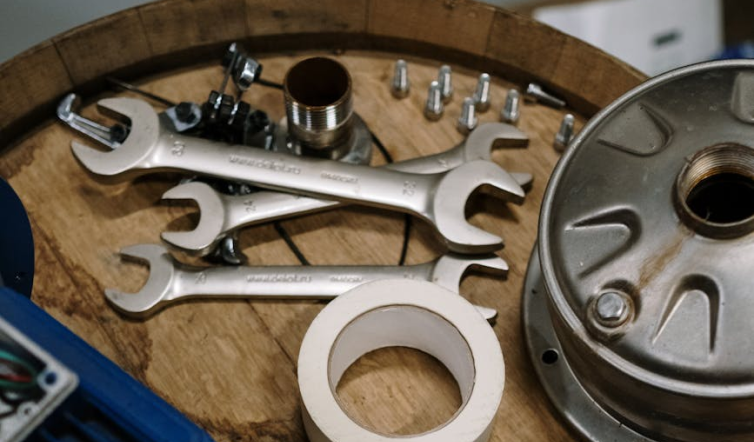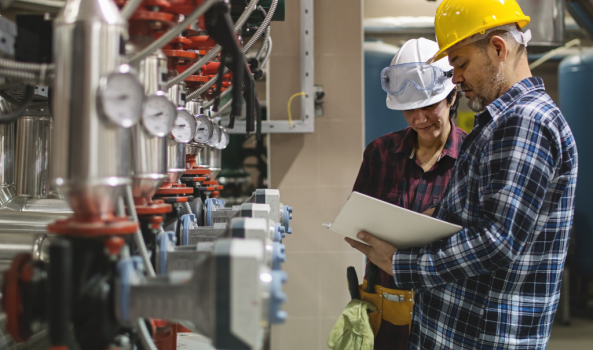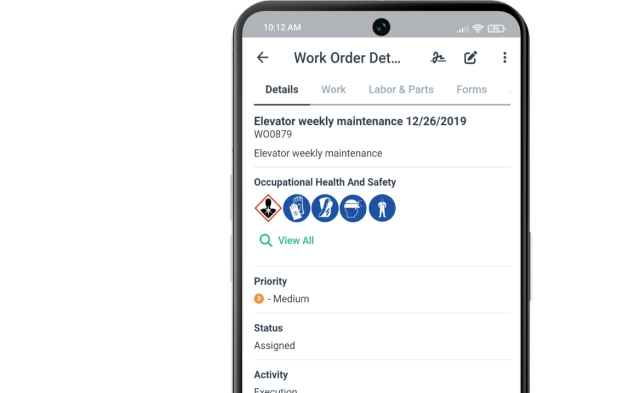Get a Free WorkTrek Demo
Let's show you how WorkTrek can help you optimize your maintenance operation.
Try for freeYour production line just ground to a halt. The critical machine that was running perfectly yesterday is now silent, and your team is scrambling to figure out what went wrong. Meanwhile, orders are backing up, customers are waiting, and every minute of downtime is costing you money.
This scenario plays out in facilities across the country every day. When you’re caught off guard by equipment failure, the real costs start piling up quickly: emergency repair bills, overtime wages, missed deadlines, and frustrated customers who might take their business elsewhere.
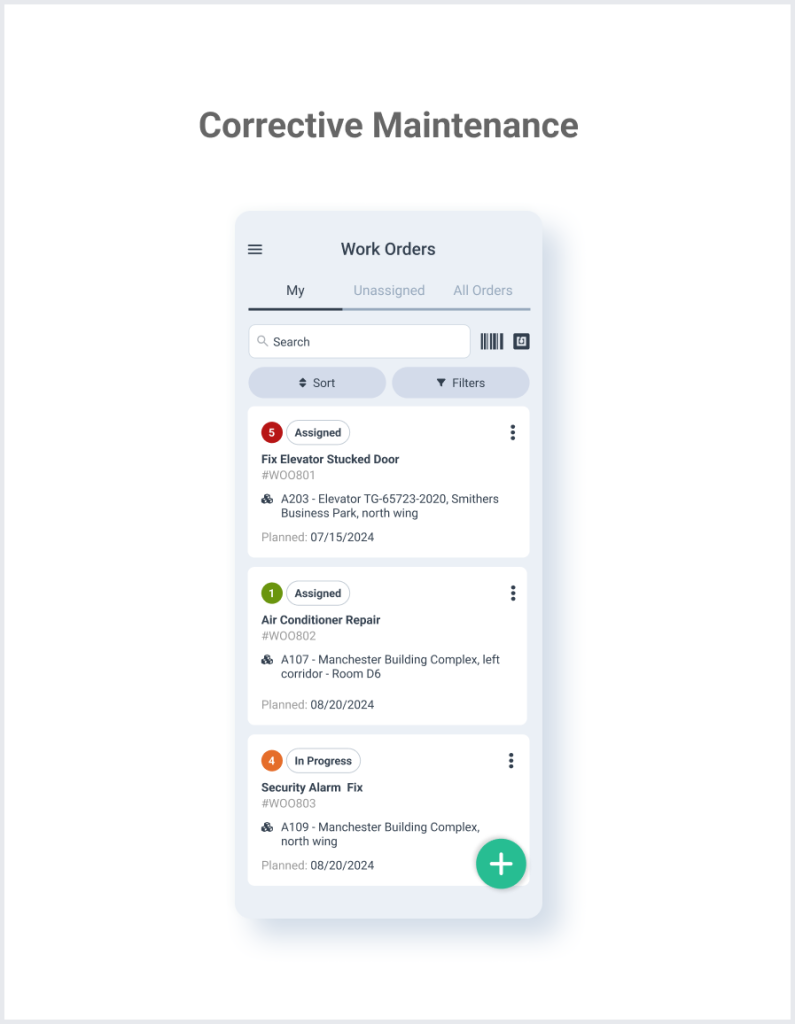
The stress of unexpected breakdowns doesn’t just hurt your bottom line; it disrupts your entire operation and puts enormous pressure on your maintenance team to fix things under crisis conditions.
Understanding corrective maintenance, the strategy of fixing equipment only after it fails, can help you make more informed decisions about when this approach is suitable for your business and when it might be setting you up for costly surprises.
While corrective maintenance may not be the right approach for every situation, understanding its pros and cons will help you develop a maintenance strategy that protects your operations while managing costs effectively.
Key Takeaways
- Corrective maintenance repairs equipment after it fails.
- This approach saves short-term costs but risks sudden breakdowns.
- Choosing the right maintenance strategy depends on the business’s specific needs.
What Is Corrective Maintenance?
Corrective maintenance refers to fixing equipment after a problem arises, rather than before.
It’s got its types, steps, and some important differences from other maintenance methods.
Definition and Key Concepts
Corrective maintenance refers to taking action to repair or restore machinery, equipment, or systems only when a fault, failure, or defect is identified.
The primary goal is to get the broken equipment running again so it can perform its intended function.
This approach is also known as reactive maintenance because it only begins once a failure has occurred.
You don’t replace parts or do repairs until you notice an issue.
That’s different from preventive maintenance, where the goal is to avoid breakdowns by performing regular checks or maintenance before issues arise.
Once a fault is identified, technicians investigate the cause, repair the issue, and test the equipment to ensure it’s functioning correctly.
Corrective maintenance is commonly used in manufacturing and other industries, generally with non-critical assets.
Types of Corrective Maintenance
You can break the corrective maintenance process into two main types: planned and unplanned.
With planned corrective maintenance, repairs are scheduled after a problem is found, but it’s not causing an immediate crisis. This can be part of your preventive maintenance schedule and can reduce long unexpected downtime.
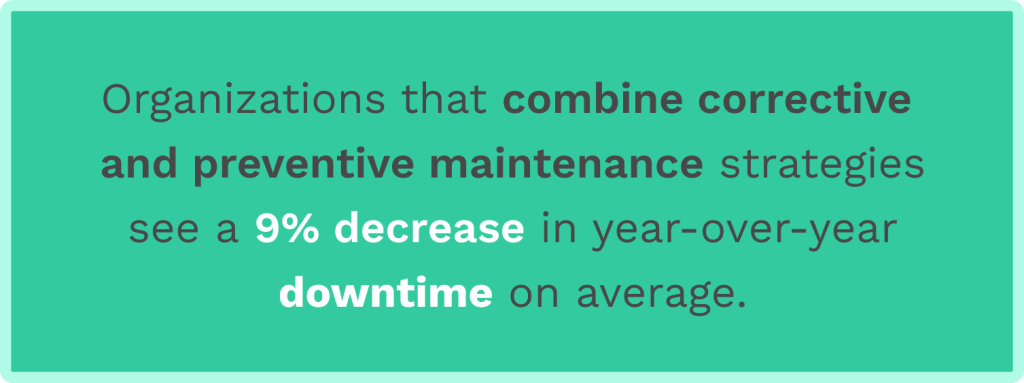
Both approaches have their advantages and disadvantages.
One benefit of planned corrective maintenance is that it allows teams to prepare, gather necessary parts, and make repairs at a scheduled time. It is also well-suited for critical equipment.
Then there’s unplanned corrective maintenance, sometimes referred to as emergency maintenance, which is used when equipment fails without warning.
Teams need to react quickly due to a work stoppage and potential safety risks.
Corrective vs. Preventive Maintenance
Corrective and preventive maintenance practices are essentially opposites in terms of timing and approach.
Corrective maintenance tasks are reactive—fix it after it breaks. Preventive maintenance tasks are all about being proactive, with regular checks to avoid sudden breakdowns.
Comparison Table:
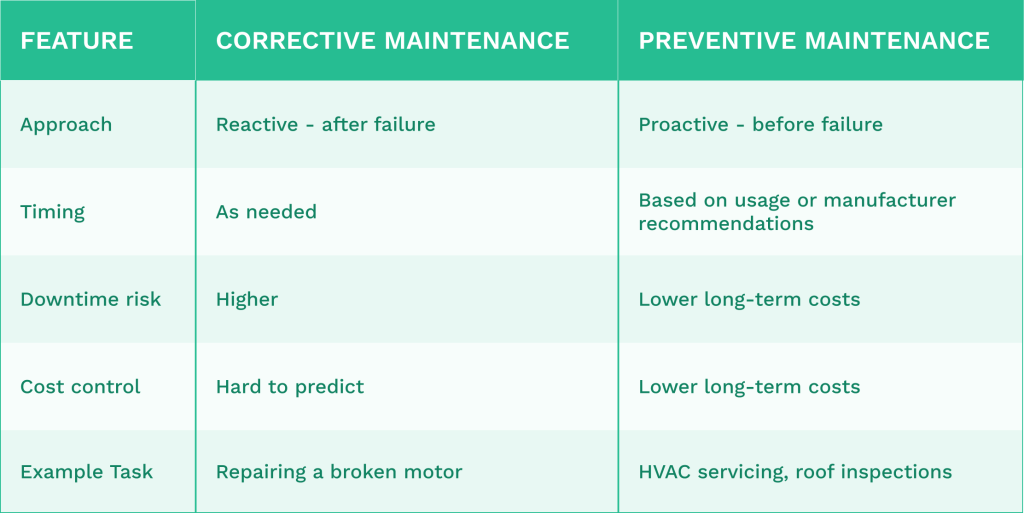
The right choice depends on business needs and equipment requirements.
How does Corrective Maintenance Work?
As described earlier in this blog, corrective maintenance happens after someone notices equipment failure. This can happen during regularly scheduled inspections, but it is more likely to happen without warning.
Waiting to address equipment issues after failure occurs can lead to increased maintenance costs, safety concerns, and reduced operational efficiency.
Identifying Equipment Failure
All problem resolutions start with first identifying the failure. This can be anything from strange noises and leaks to warning lights or the machine simply shutting down.
Some machines have alarms or sensors that indicate when something is wrong. Reviewing logbooks and maintenance records can help identify patterns or recurring issues.
Workers often compare the current breakdown to past ones, which accelerates the process of identifying the root cause.
By tracking failures, businesses can identify machines with a history of problems and plan either upgrades or the procurement of spare parts.
Servicing and Replacement
Once they identify the fault, the maintenance staff decides whether to repair, service, adjust, or replace the part. Servicing can involve tasks such as cleaning, adding oil, or tightening connections.
If something is too damaged, replacing it is the only viable option to reduce costly downtime. Checklists help make sure nothing gets missed.
Selecting the right fix ensures equipment operates safely and to standard.
Advantages of Corrective Maintenance
There are some benefits to corrective maintenance.
It can save organizations operational costs, reduce planning headaches, and enable teams to respond quickly when something breaks.
Lower Short-Term Costs
One big plus is keeping upfront costs low. Since you only repair or replace items after a problem arises, you avoid spending on regular inspections or replacing parts that might not need it.
This works well for assets that aren’t mission-critical or rarely fail. You don’t need to buy pricey monitoring systems or special tools either.
Labor only gets used when there’s something to fix. For companies on a tight budget, these lower short-term costs are a significant benefit.
Spending can be more predictable, as you only pay when something requires attention. That makes managing cash flow a little easier.
Reduced Planning Overhead
Another advantage? Less hassle with planning and scheduling.
Preventive and predictive maintenance strategy typically involves numerous plans, checklists, and regular inspections.
Corrective maintenance mostly skips all that. There’s less need to coordinate schedules or juggle different departments.
Teams can focus on what’s broken instead of sticking to a rigid timeline for every piece of equipment.
This makes management simpler and reduces paperwork.
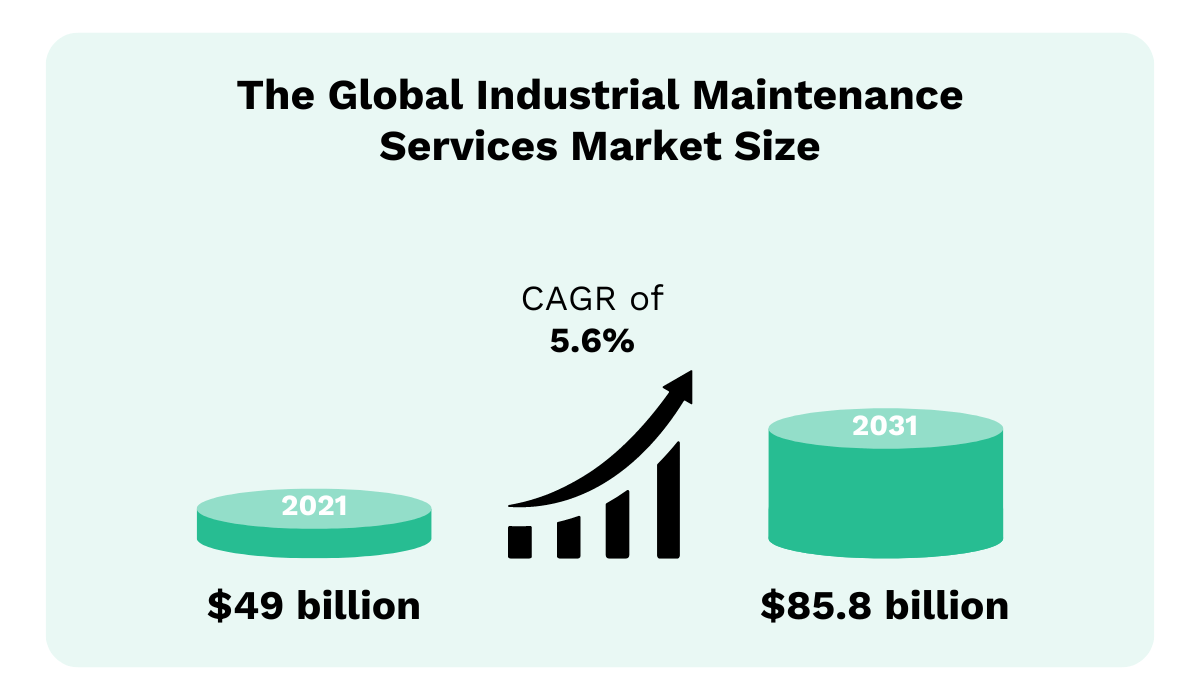
Smaller businesses or places with fewer staff especially appreciate the time and admin savings.
Disadvantages of Corrective Maintenance
Corrective maintenance can lead to unpredictable schedules, higher expenses, safety hazards, service interruptions, and shortened asset lifespan.
Waiting until equipment breaks means more interruptions and less reliable equipment over time.
Unplanned Downtime
Unplanned downtime is a big drawback of corrective maintenance. When equipment suddenly breaks, operations come to a halt until the issue is resolved.
This unexpected pause can bring an entire production line to a standstill, making it challenging to meet deadlines or fulfill orders. Workers get thrown off by the sudden change and have to scramble to adjust their schedules.
Long downtime can hurt customer trust if products or services arrive late. Unlike planned maintenance, where teams schedule disruptions, unplanned downtime can strike at any time, causing stress for staff and managers alike.
Higher Long-Term Costs
Corrective maintenance may appear inexpensive at first, but it often proves more costly over time. Emergency repairs often require urgent labor, fast-shipped parts, and sometimes outside assistance—all of which can add up.
Breakdowns can cause hidden damage that remains unnoticed until the system is inspected closely. This unseen wear can lead to more repairs and even early equipment failure.
In addition to repair bills, companies face overtime pay and lost production. Relying on fixes after things break shortens asset life and pushes long-term costs higher.
Production Loss and Downtime Costs
Production loss is a challenging problem with corrective maintenance.
When a machine fails, production may come to a halt altogether, or workers must resort to less efficient backups.
The table below highlights some common downtime costs:
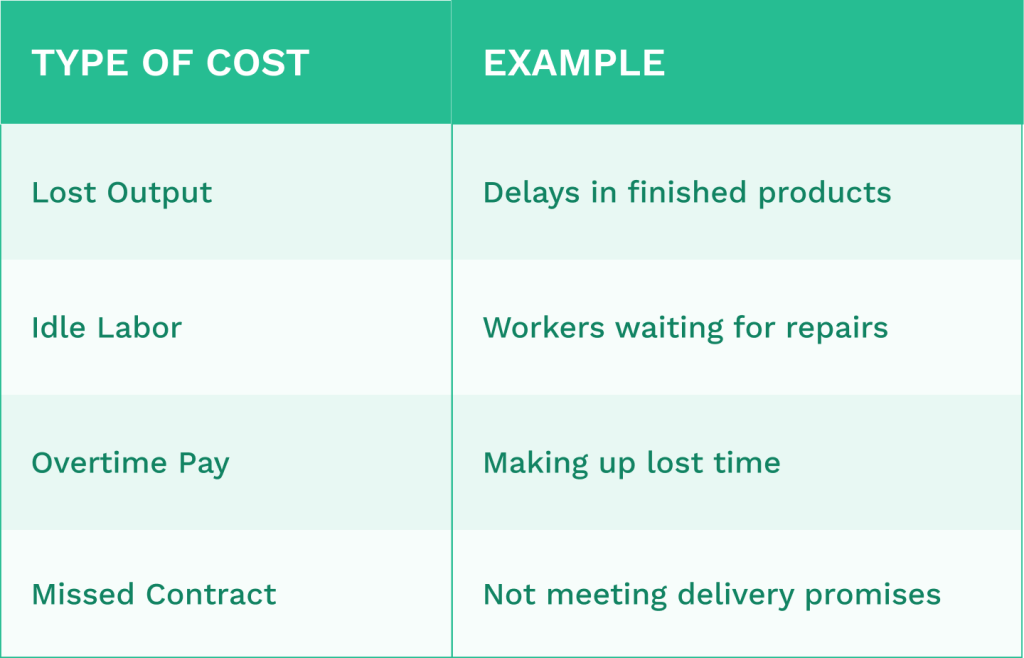
Downtime disrupts supply chains, delaying shipments and impacting related work.
Companies with frequent shutdowns can develop a reputation for being unreliable, which makes it harder to retain or attract customers.
Safety and Performance Issues
Corrective maintenance can increase safety risks, mainly when breakdowns occur while machines are in operation. Sudden failures can put workers in dangerous situations.
Some repairs require immediate attention or take place in high-risk environments, increasing the likelihood of accidents.
In industries such as food or healthcare, breakdowns can compromise product quality or even jeopardize patient safety.
Equipment waiting for repairs often operates at its best, resulting in poor efficiency or uneven output.
These issues can accumulate, leading to more accidents or sudden stops that compromise safety and productivity.
Comparing Corrective Maintenance

Corrective maintenance plays a key role in asset management and maintenance planning. It reacts to equipment failures, whereas planned strategies aim to prevent problems before they occur.
Corrective vs. Predictive Maintenance
Corrective maintenance fixes assets after they break. Predictive maintenance utilizes data and sensors to identify issues before they occur, allowing teams to repair or replace components just in time.
A significant advantage of predictive maintenance is that it can prevent unexpected issues and reduce downtime. Teams catch problems early by analyzing machine data and avoid sudden stops.
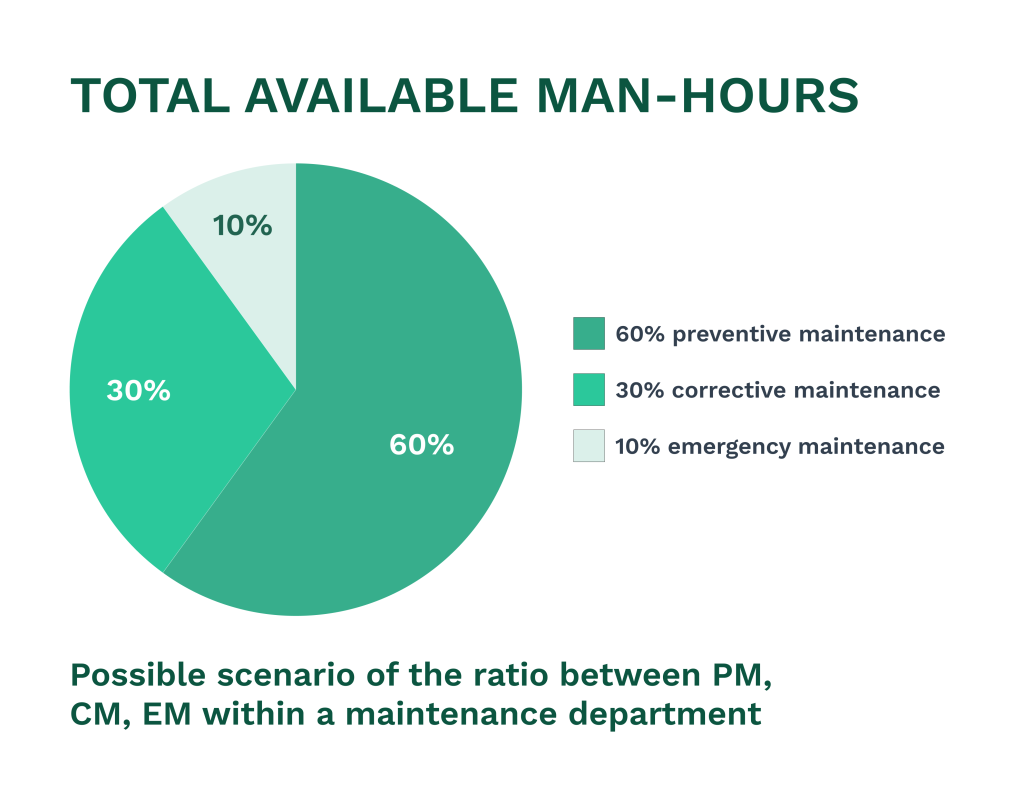
Corrective maintenance can be cheaper up front, but it leads to more unscheduled breakdowns and higher repair bills. For non-critical or low-cost machines, corrective maintenance may be effective.
For vital equipment, predictive maintenance usually offers better reliability and can save money in the long run.
Many companies combine both approaches, depending on the criticality of the asset and the stakes involved.
Role Within a Maintenance Plan
Corrective maintenance is just one piece of a bigger maintenance plan. Some teams use it for non-essential equipment or things that won’t cost much if they break.
A preventive maintenance strategy involves scheduling regular checks and repairs to prevent breakdowns before they occur.
A balanced plan incorporates several strategies, combining corrective actions with planned maintenance to reduce the risk of unexpected failures.
Condition-based maintenance is another option. Teams inspect equipment condition and schedule repairs only when something appears to be off.
This can save money and extend the life of assets. Many companies find that blending corrective, preventive, and condition-based maintenance is the most effective approach.
Integration With Scheduled Maintenance
Teams often combine corrective maintenance with scheduled plans to cut risks and costs. Scheduled maintenance sets times for checks or repairs, like once a month or after so many hours of use.
Run-to-failure maintenance is another approach. Teams don’t fix anything until it stops working, which is similar to corrective maintenance but with less planning.
Mixing corrective and scheduled work provides a backup when planned tasks fall short.
Combining scheduled and corrective work helps use labor and parts more efficiently. Teams respond fast to surprises but still follow a plan to prevent big breakdowns.
Maintenance software now helps track and schedule both types of work, enabling safer and more organized operations.
Tools and Technologies for Corrective Maintenance
Corrective maintenance relies on modern tools to quickly identify and resolve problems, ensuring equipment operates smoothly. Key technologies help schedule repairs, manage assets, and track info for smarter planning.
Using CMMS for Efficient Management
Most maintenance teams use a Computerized Maintenance Management System (CMMS). It organizes and tracks work orders, assigns tasks, and sets repair priorities in one place.
Teams can update the system from mobile devices while on-site, which reduces delays.
A CMMS enables teams to schedule repairs, review equipment history, and identify recurring issues. Everyone gets updates and knows what job needs attention right away.
Benefits of a CMMS:
- Faster response to breakdowns
- Better communication among staff
- Central history for each asset
- Less paperwork
Learn more about the role of CMMS and maintenance software at heavyvehicleinspection.com.
Asset and Inventory Management
Good asset management means knowing where each piece of equipment is and keeping info up to date. A maintenance management system tracks assets, their locations, ages, and repair history.
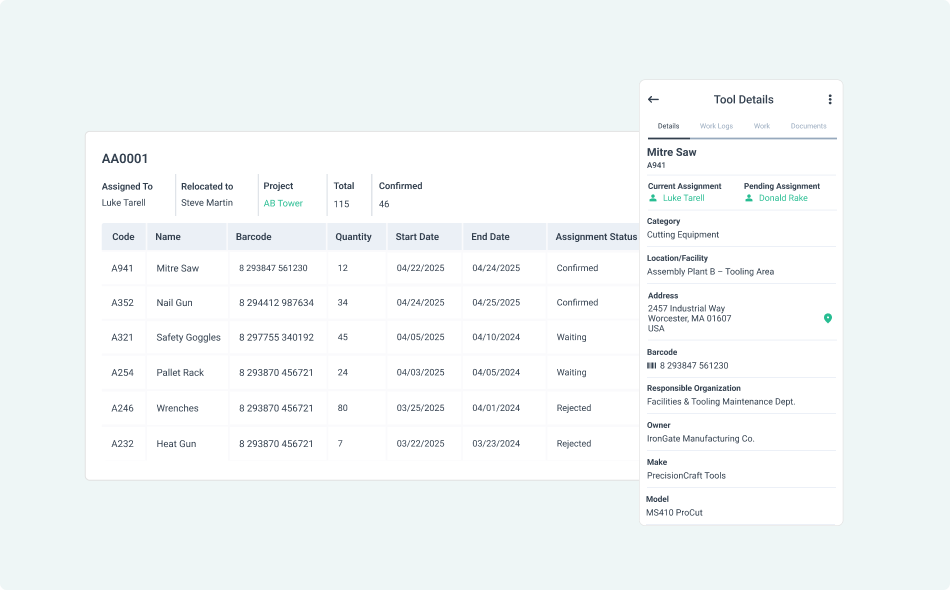
This helps staff identify which machines need attention first or frequently break down. Inventory management tools link with maintenance systems to show which parts are in stock. When a repair is needed, teams check if parts are available or must be ordered, which helps avoid long delays.
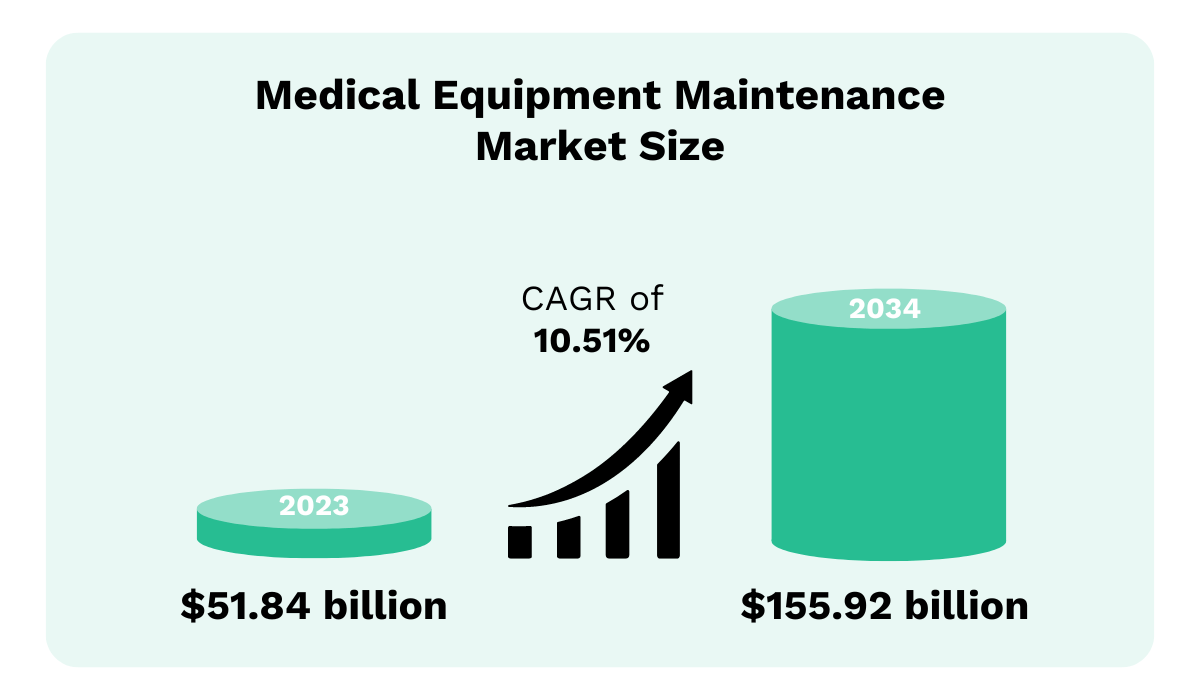
Quick access to inventories and assets helps with budgeting and cuts downtime. Teams can prep for repairs or replacements before running out of what they need. By connecting asset and inventory data, companies eliminate the guesswork and plan repairs more effectively.
Reporting and Data Logging
Accurate reporting and data logging matter for any maintenance team. Each repair or inspection gets logged, building a clear history for every asset.
Reporting tools in maintenance software let staff create custom reports. These indicate how often a machine fails, which parts tend to break, or how long it takes to make repairs.
Insights like these help teams make smarter choices and see if their process is working.
Easy dashboards and downloadable logs make it simple for managers to spot patterns and share results. Data logging also helps companies comply with safety regulations and prepare for inspections.
Maintaining solid records is essential for effective maintenance management best practices.
Corrective Maintenance Best Practices
Effective corrective maintenance hinges on acting promptly, having clear guidelines, and regularly inspecting equipment to ensure optimal performance. These steps help limit downtime and keep things running smoother.
Developing a Rapid Response Plan
A rapid response plan enables teams to address failures quickly. It’s all about clear communication between maintenance and everyone affected by the breakdown.
Key steps include:
- Assigning roles to team members
- Setting up a direct way to report problems
- Having spare parts and tools ready
Staff should know emergency procedures. If everyone understands their part, maintenance delays drop, and confusion is less likely. Having response checklists helps avoid missing steps.
Tracking response times in a maintenance system can reveal bottlenecks. Reviewing this data helps improve the process. This type of planning is a core component of effective maintenance best practices.
Implementing Standard Operating Procedures
Standard operating procedures (SOPs) give teams step-by-step instructions for repairs. Good SOPs reduce mistakes and ensure repairs are performed consistently every time.
Writing strong SOPs means being clear, using visuals such as pictures or diagrams, and breaking tasks into clear, concise steps. Each person should list the necessary parts, tools, and safety gear.
Training matters too. Teams should practice each procedure and update it as machines or rules change. SOPs should be easily accessible, either in paper or digital format, within a maintenance workflow.
Checklists built from SOPs help managers confirm that repairs follow company standards. This ensures repairs are consistent and fosters accountability.
Routine Inspection and Condition Monitoring
Routine inspection and condition monitoring help catch minor problems before they grow. It’s a simple idea, but it works.
Inspections include:
- Visual checks for damage
- Listening for unusual sounds
- Testing safety controls
Condition monitoring utilizes sensors that track data such as temperature, vibration, and output.
Teams watch these trends to spot early signs of wear or malfunction.
Maintenance crews should adhere to established inspection schedules and document their findings accurately. It may sound tedious, but those notes can make a significant difference later.
Frequent reviews help identify patterns, making planning easier and reducing the need for urgent repairs.
Making this a habit supports both routine inspection and condition monitoring as part of good maintenance.
Conclusion
Corrective maintenance repairs equipment after it has failed. Companies often like this approach since it can save money upfront by skipping routine repairs.
However, if you lean too heavily on corrective maintenance, breakdowns may occur more frequently. Downtime can drag on, especially when repairs are urgent and you have to scramble for parts or extra labor.
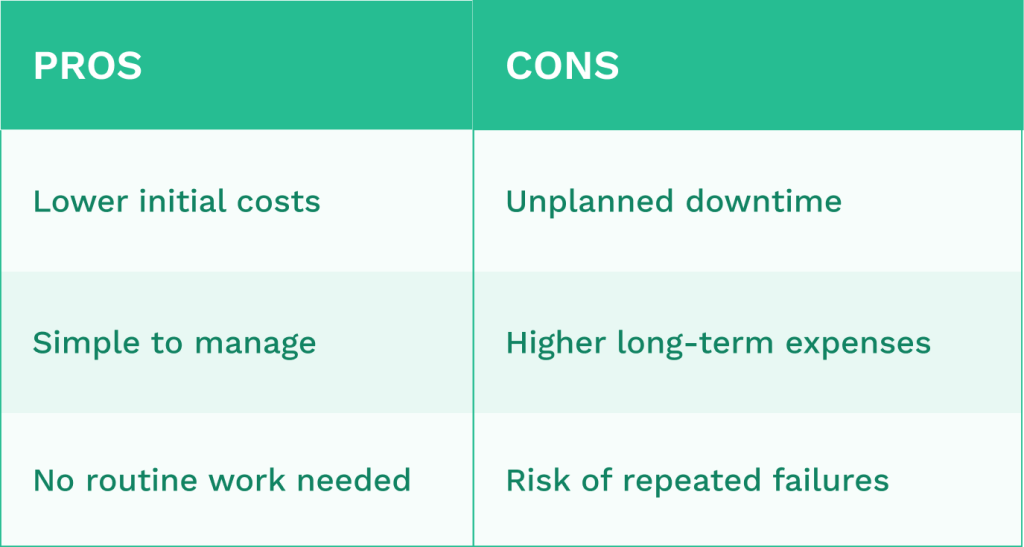
Corrective maintenance seems to make the most sense for non-critical gear or items that are inexpensive to repair.
When it comes to your most important assets, however, you may want to reconsider and explore alternative strategies.
Every site operates a little differently, so consider your specific needs, available resources, and equipment type before selecting an approach.
Mixing corrective maintenance with other maintenance methods can help reduce risk and increase system reliability.



